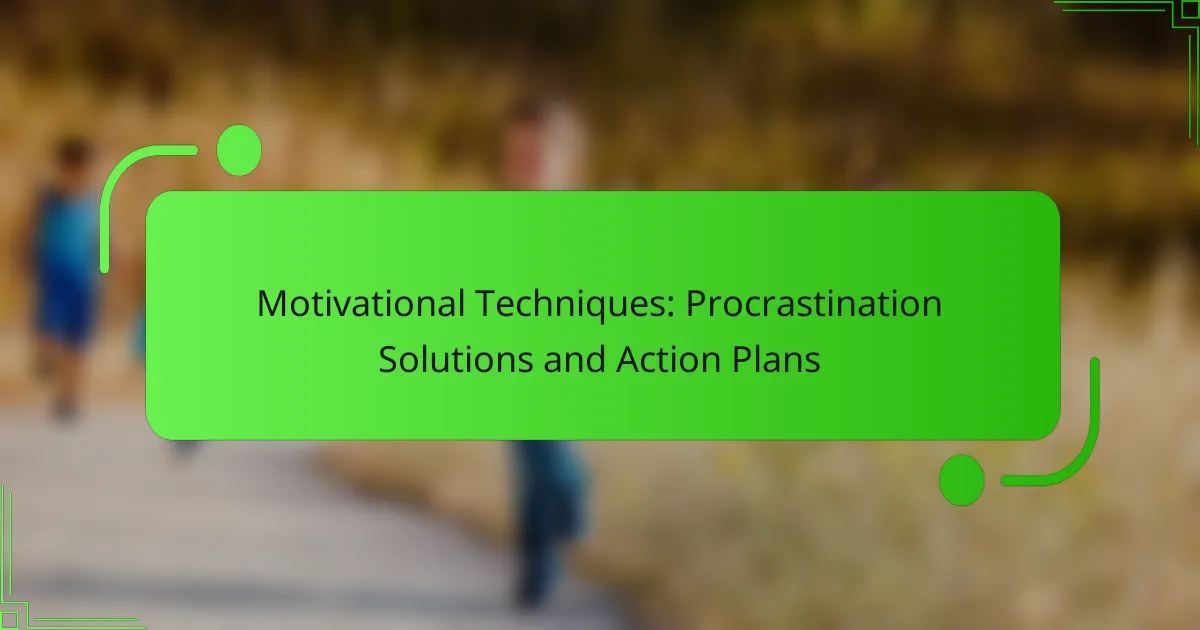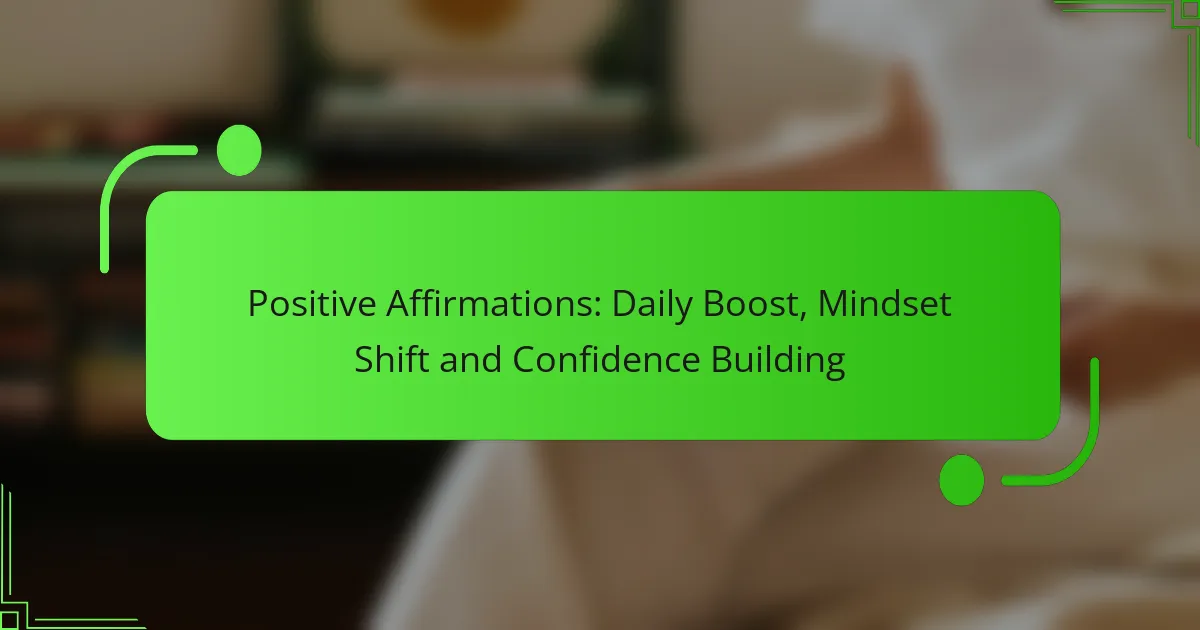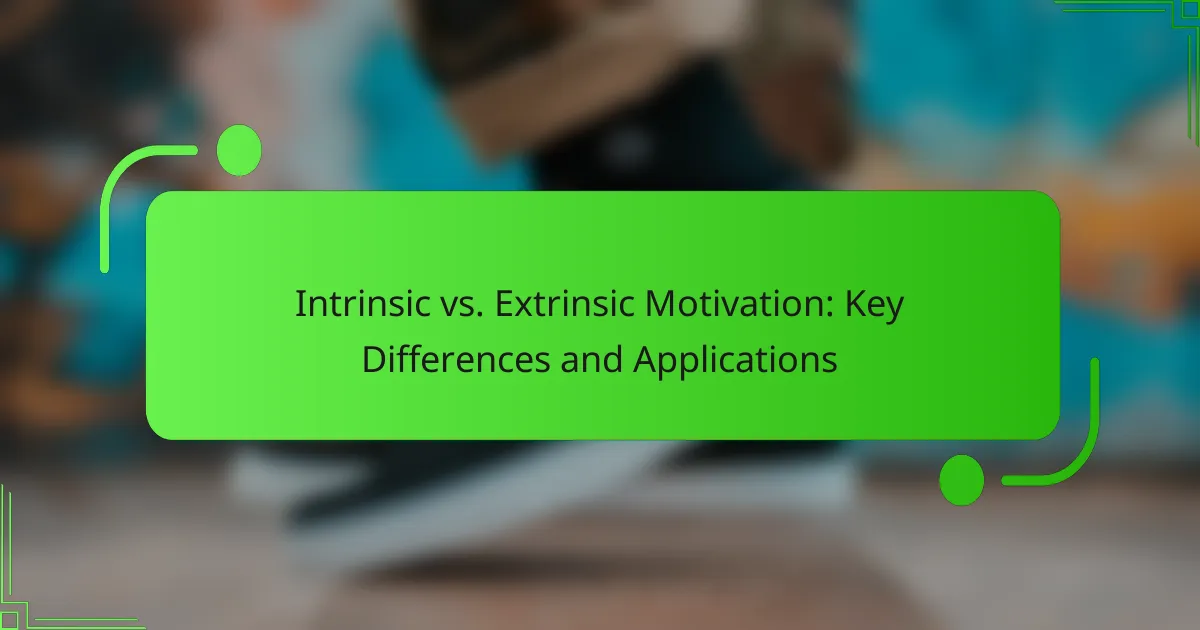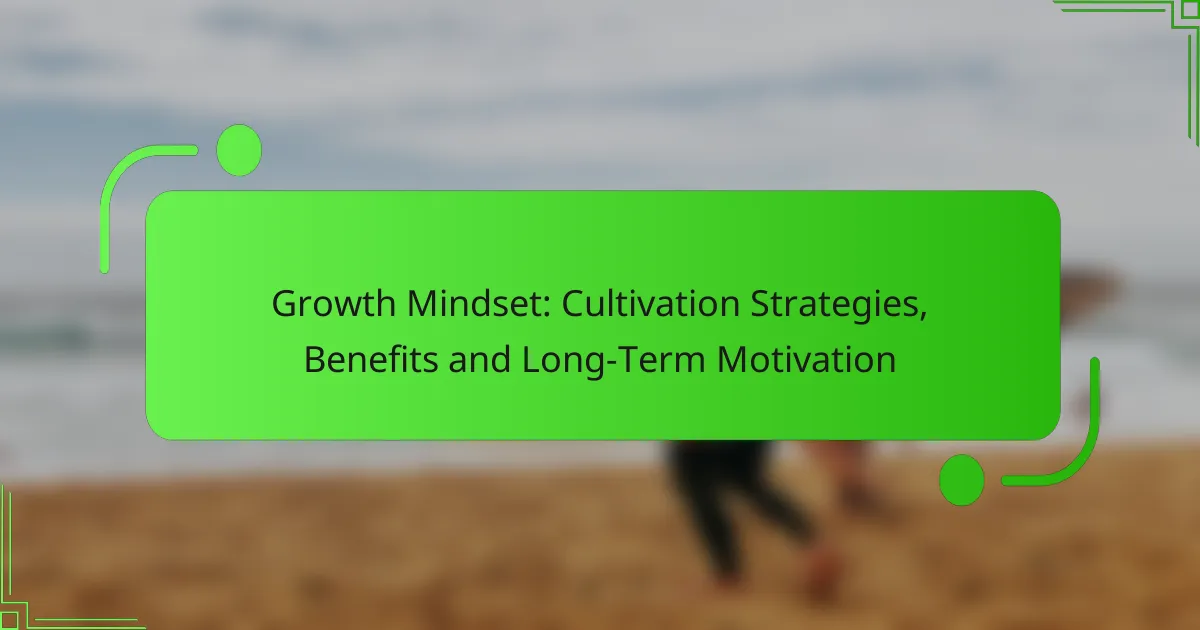Procrastination can hinder progress and productivity, but effective solutions exist to help individuals take action and manage their time efficiently. By implementing structured action plans that break down larger goals into smaller, manageable tasks, individuals can overcome feelings of overwhelm and stay focused. Understanding the role of motivation is essential in developing strategies that encourage timely action and enhance overall productivity.
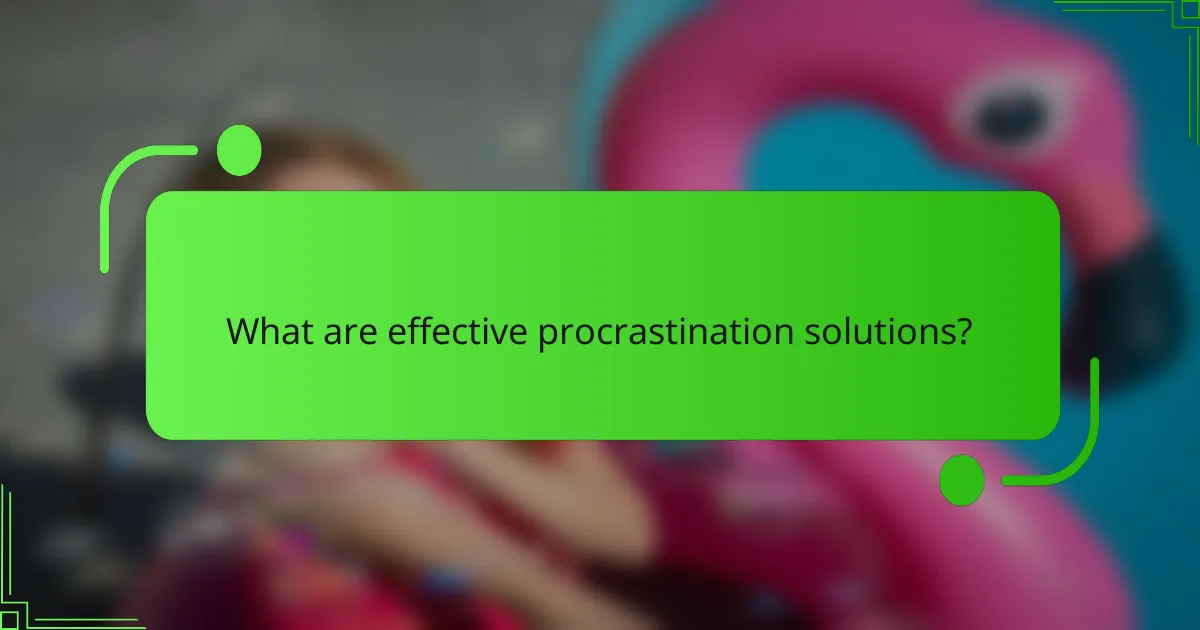
What are effective procrastination solutions?
Effective procrastination solutions focus on practical techniques that help individuals take action and manage their time better. These strategies aim to minimize distractions and enhance productivity, making it easier to tackle tasks without delay.
Time blocking technique
The time blocking technique involves scheduling specific blocks of time for different tasks throughout your day. By allocating dedicated periods for work, breaks, and personal activities, you create a structured routine that can reduce the likelihood of procrastination.
To implement time blocking, start by identifying your most important tasks and estimate how long each will take. Use a calendar or planner to visually map out your day, ensuring you stick to the allocated times. Avoid multitasking during these blocks to maintain focus.
Pomodoro technique
The Pomodoro technique is a time management method that uses intervals of focused work followed by short breaks. Typically, you work for 25 minutes, then take a 5-minute break, repeating this cycle to enhance concentration and reduce fatigue.
To apply this technique, set a timer for 25 minutes and commit to working on a single task until the timer goes off. After four cycles, take a longer break of 15-30 minutes. This approach can help maintain motivation and make daunting tasks feel more manageable.
Accountability partners
Working with accountability partners can significantly reduce procrastination by providing external motivation and support. An accountability partner is someone who shares similar goals and checks in on each other’s progress regularly.
To establish an effective partnership, choose someone who is reliable and committed. Set specific goals and deadlines together, and schedule regular meetings to discuss progress. This mutual commitment can enhance motivation and keep procrastination at bay.
Task prioritization
Task prioritization involves ranking tasks based on their importance and urgency, allowing you to focus on what truly matters. This method helps prevent overwhelm and ensures that critical tasks are completed first.
To prioritize effectively, use a system like the Eisenhower Matrix, which categorizes tasks into four quadrants: urgent and important, important but not urgent, urgent but not important, and neither. Focus on the first two categories to maximize productivity and minimize procrastination.
Mindfulness practices
Mindfulness practices can enhance focus and reduce procrastination by promoting awareness of thoughts and feelings. Techniques such as meditation, deep breathing, and mindful observation can help you stay present and engaged with your tasks.
Incorporate mindfulness into your daily routine by setting aside a few minutes each day for meditation or deep breathing exercises. This practice can help clear mental clutter, making it easier to approach tasks with a focused mindset and reducing the tendency to procrastinate.
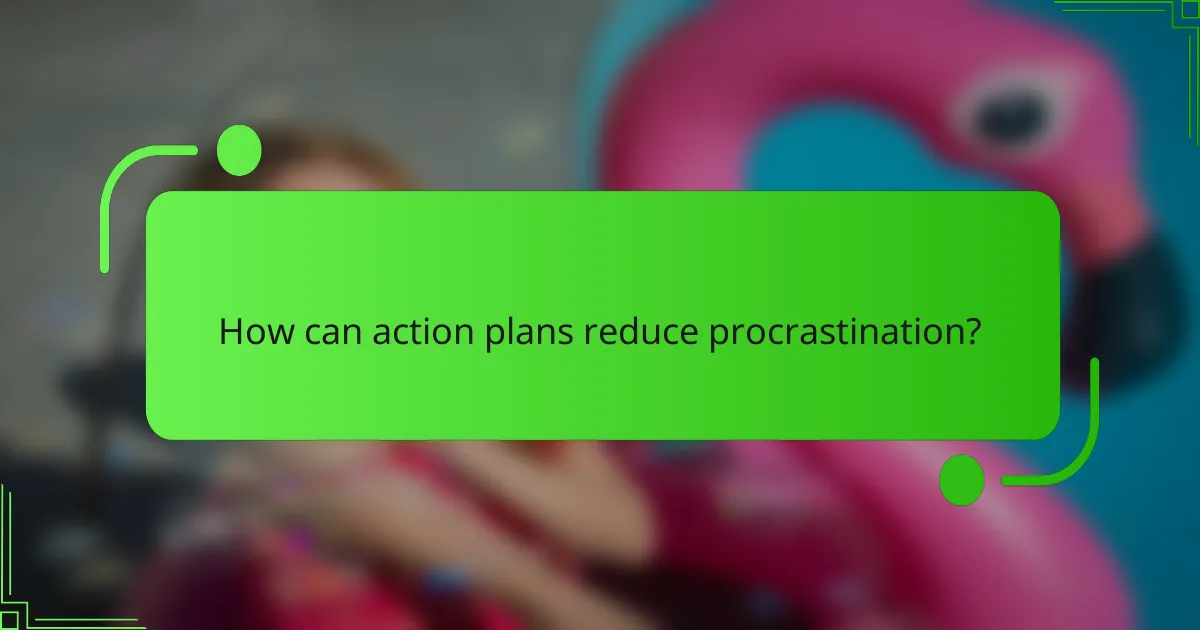
How can action plans reduce procrastination?
Action plans can significantly reduce procrastination by providing a structured approach to tasks, making them feel more manageable and achievable. By breaking down larger goals into smaller, actionable steps, individuals can focus on immediate tasks rather than feeling overwhelmed by the bigger picture.
SMART goals framework
The SMART goals framework is a powerful tool for creating effective action plans. SMART stands for Specific, Measurable, Achievable, Relevant, and Time-bound, ensuring that each goal is clear and attainable. For example, instead of saying “I want to get fit,” a SMART goal would be “I will exercise for 30 minutes, five days a week for the next month.”
Using this framework helps individuals clarify their objectives and set realistic timelines, which can motivate them to take consistent action. Regularly reviewing and adjusting these goals can further enhance focus and commitment.
Daily to-do lists
Daily to-do lists are practical tools for combating procrastination by outlining specific tasks to complete each day. By prioritizing tasks and breaking them into smaller steps, individuals can create a clear roadmap for their day, reducing the likelihood of distractions. For instance, listing tasks like “write report” or “call client” can provide immediate focus.
It’s essential to keep these lists realistic; aiming for 5-10 tasks per day can help maintain motivation without overwhelming oneself. Crossing off completed tasks can also provide a sense of accomplishment, reinforcing positive behavior.
Progress tracking tools
Progress tracking tools, such as apps or spreadsheets, can help individuals monitor their achievements and stay accountable. By regularly logging completed tasks, users can visualize their progress over time, which can be a strong motivator to continue working towards their goals. Tools like Trello or Asana can facilitate this process by allowing users to organize tasks visually.
Additionally, setting milestones within these tools can provide checkpoints that encourage individuals to celebrate small victories along the way. This practice not only helps maintain momentum but also reinforces the habit of consistent action against procrastination.
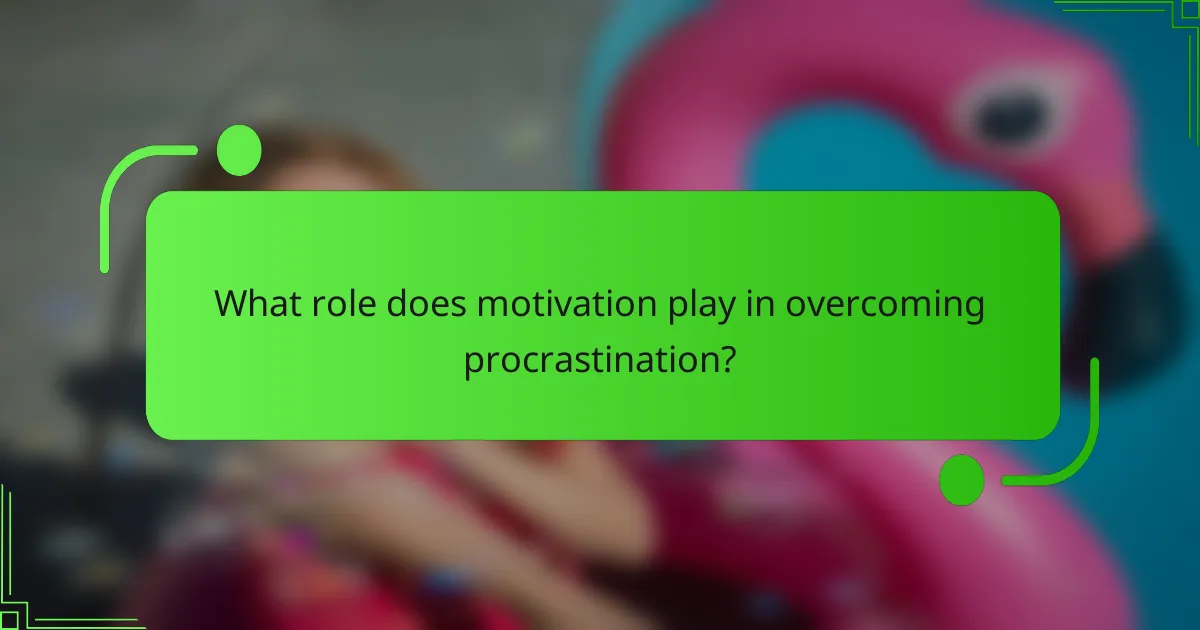
What role does motivation play in overcoming procrastination?
Motivation is crucial in overcoming procrastination as it drives individuals to take action towards their goals. Understanding the types of motivation can help in developing effective strategies to combat delays and enhance productivity.
Intrinsic vs extrinsic motivation
Intrinsic motivation comes from within, driven by personal satisfaction or the joy of completing a task. For example, someone may feel motivated to learn a new skill simply for the pleasure it brings. In contrast, extrinsic motivation relies on external rewards, such as praise, money, or recognition.
Both types of motivation can be effective in reducing procrastination. However, intrinsic motivation often leads to more sustainable habits, as it fosters a genuine interest in the task. Balancing both forms can create a comprehensive approach to staying on track.
Setting personal rewards
Establishing personal rewards can significantly enhance motivation and reduce procrastination. By setting specific, achievable goals and pairing them with rewards, individuals can create a positive feedback loop. For instance, completing a project might be rewarded with a favorite treat or a break to enjoy a hobby.
When setting rewards, ensure they are meaningful and proportionate to the effort required. Small, frequent rewards can be more effective than larger, infrequent ones, as they maintain motivation over time. Avoid using rewards that might distract from the task at hand, such as excessive screen time, which can lead to further procrastination.

How can technology aid in managing procrastination?
Technology can significantly help manage procrastination by providing tools that enhance focus and organization. By leveraging productivity apps and website blockers, individuals can create structured environments that minimize distractions and promote task completion.
Productivity apps like Todoist
Productivity apps such as Todoist allow users to organize tasks, set deadlines, and prioritize their workload. These applications often feature reminders and progress tracking, which can motivate users to stay on task and complete their assignments efficiently.
When using Todoist, consider breaking larger projects into smaller, manageable tasks. This approach can make daunting assignments feel less overwhelming and help maintain momentum. Additionally, utilizing the app’s labeling and filtering options can streamline your workflow.
Website blockers like Freedom
Website blockers like Freedom help users eliminate distractions by restricting access to specific websites or applications during designated times. This can be particularly effective for individuals who find themselves frequently sidetracked by social media or entertainment sites.
To maximize the effectiveness of website blockers, set specific time blocks for focused work sessions, such as 25 minutes of work followed by a 5-minute break. This technique, known as the Pomodoro Technique, can enhance productivity while ensuring you still have time to relax and recharge.
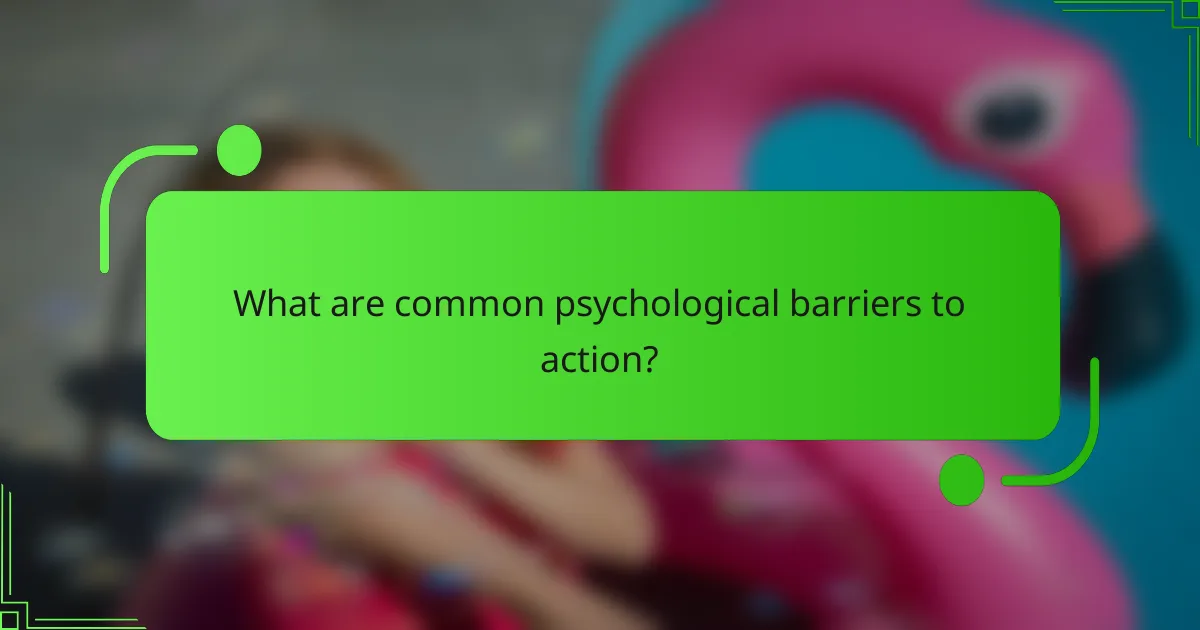
What are common psychological barriers to action?
Common psychological barriers to action include fear of failure and perfectionism, which can significantly hinder motivation and productivity. Understanding these barriers is crucial for developing effective strategies to overcome procrastination and take decisive action.
Fear of failure
Fear of failure often leads individuals to avoid taking action due to the anxiety associated with potential negative outcomes. This fear can create a cycle of inaction, where the anticipation of failure becomes more daunting than the actual task at hand.
To combat fear of failure, it is helpful to reframe your mindset. Instead of viewing failure as a definitive end, consider it a learning opportunity. Setting smaller, achievable goals can also reduce the pressure and make taking action feel less intimidating.
Common pitfalls include overthinking and dwelling on worst-case scenarios. To avoid this, focus on the steps you can take rather than the potential for failure. A simple checklist of tasks can help keep your attention on progress rather than fear.
Perfectionism
Perfectionism can paralyze action by setting unrealistically high standards that are often unattainable. This mindset leads to procrastination as individuals wait for the “perfect” moment or conditions to begin a task.
To overcome perfectionism, aim for progress rather than perfection. Accept that completing a task to a satisfactory level is often more beneficial than striving for an unattainable ideal. Setting deadlines for tasks can also help maintain momentum and prevent excessive revisions.
Another effective strategy is to prioritize tasks based on their importance and impact. Use a simple scale to categorize tasks as high, medium, or low priority, which can help you focus on what truly matters and reduce the urge to perfect every detail.

What frameworks can help in creating effective action plans?
Frameworks such as GTD (Getting Things Done) and the Kanban system provide structured approaches to developing actionable plans that can combat procrastination. These methods emphasize organization, prioritization, and visual tracking to enhance productivity and focus.
GTD (Getting Things Done) method
The GTD method, developed by David Allen, is a time management system that helps individuals capture tasks and organize them into actionable steps. It involves five key stages: capture, clarify, organize, reflect, and engage, which guide users in processing tasks effectively.
To implement GTD, start by writing down all tasks and ideas in a trusted system. Then, clarify what each task requires and organize them into categories such as projects or contexts. Regularly review your lists to ensure you stay on track and adjust priorities as needed.
Common pitfalls include overcomplicating the system or failing to review tasks regularly. Keep your lists concise and focus on actionable items to maintain clarity and motivation.
Kanban system
The Kanban system is a visual workflow management method that helps teams and individuals manage tasks efficiently. It uses a board divided into columns representing different stages of work, allowing users to visualize progress and prioritize tasks effectively.
To set up a Kanban board, create columns for stages such as “To Do,” “In Progress,” and “Done.” Use cards to represent individual tasks, moving them across the board as work progresses. This visual representation aids in identifying bottlenecks and balancing workload.
When using Kanban, avoid overloading any single column to maintain flow. Regularly review and adjust your board to reflect current priorities and ensure that tasks are completed in a timely manner. This method is particularly effective for teams but can also be adapted for personal use.
